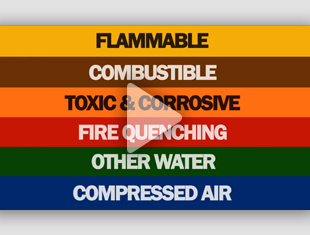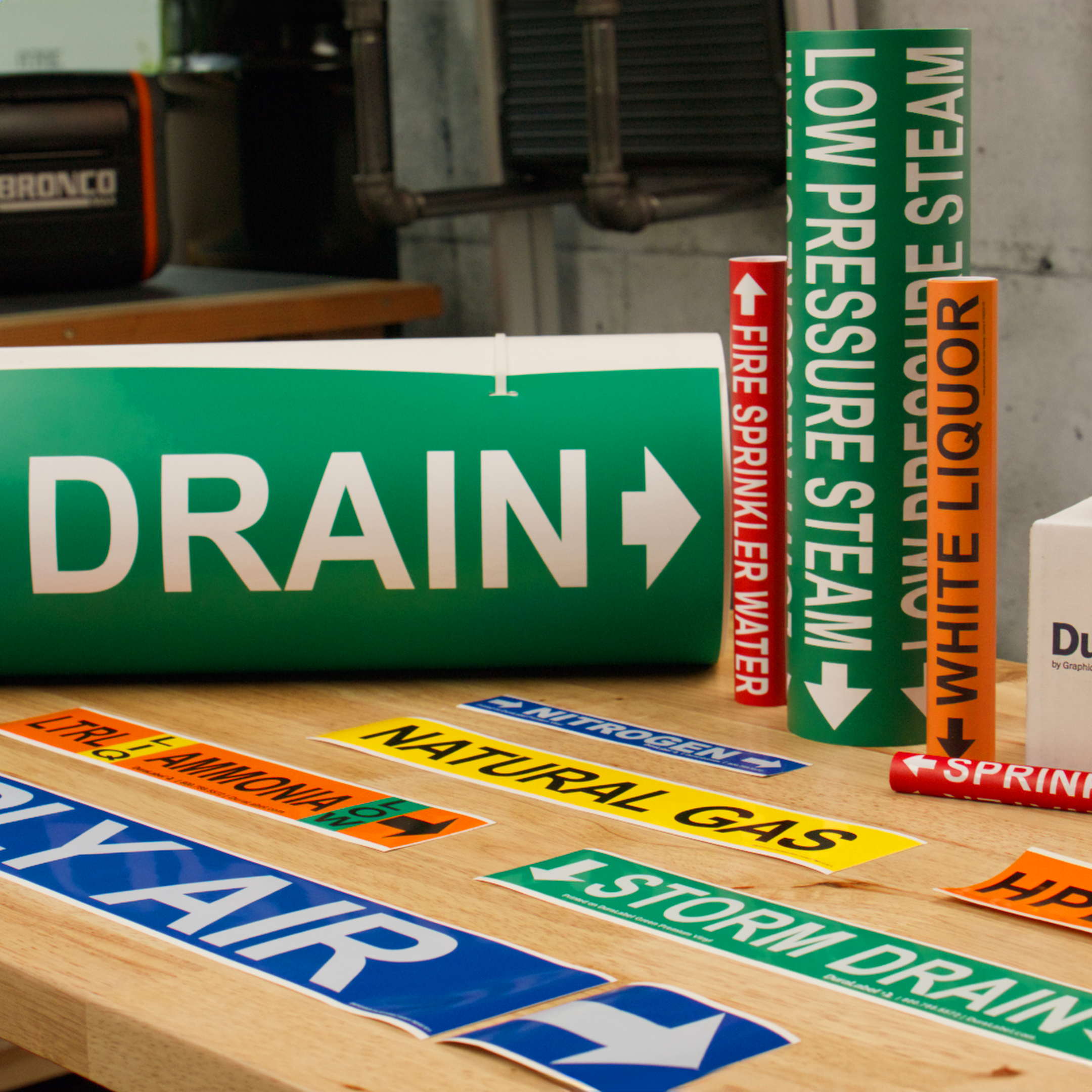What is Pipe Marking
Pipes, lines, tubing, conduits while the terminology varies, the problem is always the same: Workers, site visitors and emergency responders all need to know what's in those pipes.
The solution is pipe marking.
Always check with local authorities on your area's exact regulations as there are dozens of standards for pipe marking and they range widely in applicability, popularity and legal requirements. The most widely accepted are the ANSI/ASME A13.1 standard.
Created in 2007, the current standard blends existing ANSI and ASME guidelines.
Now, which pipes need to be marked? Ideally, all pipes in a facility are properly labeled, but the ANSI / ASME standard outlines three categories specifically that require identification:
- Pipes with hazardous contents or contents that could generate hazardous conditions.
- Pipes that could affect the procedures followed during an emergency or that are part of hazard prevention, emergency response or serve a safety purpose.
- Pipes' whose flow must be redirected, shut off, or adjusted to allow for maintenance or other expected work.
When it comes to marking these pipes, it's important to quickly know what they contain, so the ANSI / ASME standard uses this color code to identify pipes by the general kinds of materials they contain.
The A13.1 standard also state that the text, or "legend" is the most important element on the label. When designing a label, the size of both label itself and the text is determined by the (OD) or outer diameter of the pipe being marked. For example, any pipe with an 8 to 10 inch outer diameter should have a label sizing at least 3 by 24 inches, with text at least 2.5 inches tall. This ensures that the marking is clearly visible.
For an in-depth look at the ANSI/ASME pipe marking standard, or to find out how to evaluate and update your facilities' pipe marking system-follow the link, fill out the form and receive your free copy of our Pipe Marking Best Practice Guide.
Related Resources

ANSI/ASME Pipe Marking Color Code
Do you know the contents of this pipe? Or that one? Having facility pipes clearly marked with compliant ...
Watch Now
Pipe Marking Made Easy
Makeshift pipe marking is risky and only a short-term solution. At DuraLabel, we understand that compliant ...
Watch Now
IIAR Pipe Marking Labels
Is this label compliant? How do you know? Can you point out what needs to change? The IIAR, or International ...
Watch Now.png)





